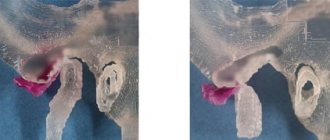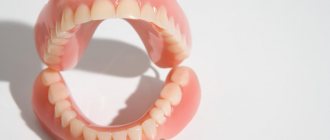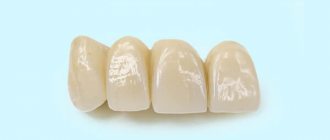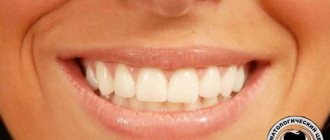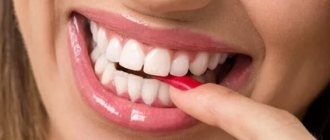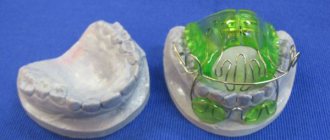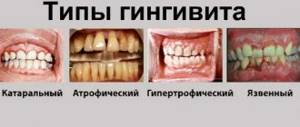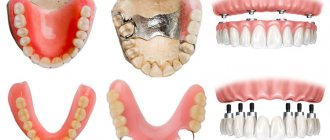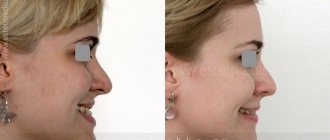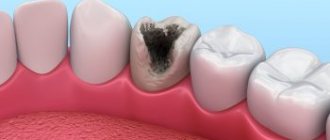The doctor plans orthopedic treatment individually for each patient, taking into account the number and location of missing teeth, periodontal condition and level of health. But there are still general principles for choosing a prosthesis design depending on the extent and location of the defect. For recording in the chart and professional communication between dentists, it is more convenient to use a symbol of the clinical situation, rather than its full description. The classification of dental defects simplifies the algorithm for choosing a treatment plan and filling out documentation.
Which classification is better?
Classics of orthopedic dentistry - Kennedy classification. In it, dentition defects are divided into 4 classes: one- and two-sided end defects, included in the lateral and frontal areas. At the same time, the absence of several teeth in the lateral area on one side and on both sides must be classified as one class, which in practice is not always convenient. Therefore, some dentists in the clinic use a more detailed classification of Gavrilov. The classes in these systems may not match in number, so when formulating a diagnosis, the doctor must indicate which classification he uses, according to Gavrilov or Kennedy.
Why is it necessary to systematize defects in dental arches?
There are a great variety of different combinations of dental defects. For example, if you try to create a mathematical model of these combinations, including all available characteristics and taking into account the combination of various characteristics. As a result, we get at least 4*109 options, each of which has the right to exist. Such a number of variations clearly shows the need to develop generalized classifications. This is more convenient in practical use and allows doctors from different countries to understand each other.
Kennedy classification
Class I – chewing teeth are absent on both sides, the dentition is shortened and ends at the 5th 6th tooth on each side;
Class II – shortening of the dental arch on one side, molars missing on the right or left;
Class III – several teeth are missing in the lateral area, but the trailing ones are preserved;
Class IV – absence of incisors or canines in the anterior part of the jaw.
If there are several isolated defects, a lower class is assigned. For example, if two teeth are missing in the front area and three molars on the right, the defect is classified as first class. In this regard, Kennedy's classification is not entirely convenient. One group includes fundamentally different clinical situations, for which the prosthetic plan will be different.
Symptoms of defects
The Kennedy classification of defects indicates that the problem arises as a result of tooth loss or development. Signs depend on many factors:
- the exact location may be the lateral or front teeth on the lower or upper jaw);
- flaw parameters;
- type of defect (can be included or terminal);
- bite structures;
- patient's age;
- condition of the gums and existing teeth;
- time from the moment of tooth loss to the start of treatment;
- reasons for the defect.
To identify a defect, you need to come to an appointment with a dentist, who will conduct an examination and determine the problem. The main complaints from patients that force people to go to the doctor are:
- malocclusion;
- inability to fully chew food;
- jaw bone deformation;
- in some cases, diction problems.
Elimination of the defect depends on the group of the disease, for which a certain scheme must be used, and the Kennedy classification is most often used. Before prosthetics or implantation, the dentist must carry out professional teeth cleaning, during which they eliminate caries and eliminate any inflammatory processes.
Classification according to Gavrilov
Class 1 – absence of chewing teeth on the right or left;
Class 2 – loss of distal support of the dentition on both sides;
Class 3 – several chewing teeth are missing and there are closing teeth on one side;
Class 4 – absence of several molars with preservation of distal supports on both sides;
Class 5 – absence of several incisors and/or canines;
Class 6 – combined defects of the dentition;
7th grade – one tooth is retained on the jaw.
The Gavrilov classification is more detailed in comparison with the Kennedy taxonomy and better reflects the clinical situation, therefore, when making a diagnosis, it is easier to plan treatment using it.
Prevention methods
An adult can independently take measures to prevent the occurrence of defects, which can be diagnosed using the Kennedy classification. The main enemy in this situation is caries, so adequate oral hygiene and regular visits to the dentist are necessary. This also applies to children. Parents may neglect the oral hygiene of a child with baby teeth because they think they will fall out anyway and don't need care. But that's not true. Also, if detected, they must be treated promptly. Ignoring any problems in the oral cavity can aggravate the situation and lead to tooth loss.
This disease is easily recognized by the absence of one or more teeth, which causes discomfort when chewing and talking. Ignoring such violations can negatively affect healthy teeth and lead to a decrease in the volume of bone tissue in the jaw.
It is very important to promptly seek help from a dentist or orthodontist who can provide adequate treatment.
According to Kennedy and Gavrilov
II class according to Kennedy - 1 according to Gavrilov
Since there is no distal support, it is impossible to make a permanent bridge, there is simply nothing to fix it to. Previously proposed cantilever structures with an overhanging artificial crown did not stand the test of time. They do not last long and, in addition, lead to loosening and falling out of the support.
The following orthopedic treatment options are possible:
- partial plate removable denture is not fixed well enough and tips over during chewing, since the load falls on one side of the plate;
- The clasp prosthesis, due to the presence of cast clasps and a metal arch, tilts to a lesser extent and acts less aggressively on the supporting teeth;
- prosthetics on implants according to the principle of one tooth - one implant involves the manufacture of a non-removable structure. In this case, chewing efficiency is completely restored and there is no additional stress on the remaining teeth. In the absence of special contraindications, this is the method of choice.
I class according to Kennedy - 2 according to Gavrilov
The same prosthetic options are used as in the previous case. Bilateral end defects differ in that in this case the fixation and function of removable dentures is better due to the uniform distribution of the load on both sides. When choosing a fixed structure, a clasp denture is preferable, especially in the upper jaw. The presence of a metal arc allows you to reduce the size of the plate and leave the sky open.
Fixed prosthetics are possible with the use of implants. If the teeth have been lost for a long time and no treatment has been carried out, the bone tissue may not be enough, but in this case it can be increased using a special operation. With good hygienic skills and the absence of contraindications, the effectiveness of prosthetics on implants in this case is superior to that of removable prosthetics.
III class according to Kennedy - 3 according to Gavrilov
It is possible to restore the defect using both removable and non-removable structures:
- A bridge supported by teeth that limit the defect is a budget option. The advantage is that the design is non-removable, the disadvantage is the increased load on the supporting teeth. Periodontal diseases and mobility of remaining teeth can significantly narrow the indications for such treatment.
- removable clasp denture is a viable prosthetic option, but not entirely comfortable. Firstly, the design is removable, and secondly, if there is a one-sided defect, the overturning effect will work.
- installation of implants is again leading in terms of comfort and physiology. There is no load on the supporting teeth, there is no need to grind them down to remove healthy tissue, and the chewing function is completely restored.
III class according to Kennedy - 4 according to Gavrilov
The options are the same, but clasp dentures in terms of ease of wear and restoration of function are catching up with fixed structures due to the bilateral uniform distribution of the load.
IV class according to Kennedy - 5 class according to Gavrilov
Removable and bridge dentures may well restore the function of lost teeth, but in order for their fixation to be adequate, it is necessary to use clasps that will be clearly visible on the teeth. But in the anterior section, aesthetics are needed. Bridges, with sufficiently strong support, are functionally satisfactory, but can also compromise aesthetics, especially with atrophy of the alveolar process, when a significant gap forms between the neck of the artificial tooth and the gum.
Implants help completely restore the chewing efficiency and aesthetics of the front teeth. This is the only localization in which installation of an implant simultaneously with tooth extraction is preferable. This creates optimal conditions for healing and prevents loss of gums and bone tissue. The aesthetic result of such structures is beyond competition.
6th grade according to Gavrilov
For combined defects, planning is strictly individual. This option is not reflected in Kennedy's classification.
7th grade according to Gavrilov
This type of dentition defects in the Kennedy classification is classified as bilateral end, while the clinical manifestations and treatment plan in these two cases can differ radically. It was previously proposed to use single teeth as a support for fixing a removable denture, especially in the lower jaw, where the conditions for this, to put it mildly, leave much to be desired. With the advent of implantation, the need to save the last tooth by hook or by crook has disappeared. Prosthetics for single standing teeth, as well as for completely toothless jaws, are carried out using implants.
Causes of dental defects
There are several reasons that lead to the problem (to eliminate them, it is necessary to classify the pathology as a specific group, which is why the Kennedy classification exists):
- Congenital anomalies, in particular edentia (lack of teeth) due to mother's illness during pregnancy, due to which the rudiments of teeth may be absent, there may also be errors in the structure of the enamel, which is inherited.
- Having bad habits. In children, using a pacifier and artificial feeding, sucking fingers; in adults, the habit of cracking nuts, such as pistachios, can lead to tooth loss.
- Caries if left untreated. Regular visits to the dentist will help keep your teeth intact.
- Inflammatory processes. If purulent inflammation occurs, the tooth must be removed immediately. Periodontitis, cysts, periodontitis and other dental diseases can lead to this.
- Mechanical injuries, which is especially important at the age of 6-9 years. During this period, the baby teeth are replaced by molars, and a strong blow can damage the root.
- Children's diseases, such as rickets, pneumonia, acute respiratory diseases that appear during the formation of teeth. They have a negative impact on the structure of the central incisors.
- The presence of a neoplasm in the periodontium. If it is detected, then immediate tooth extraction is necessary. Neoplasms can occur as a result of disruption of the thyroid gland, gastrointestinal tract, and also due to a lack of vitamins.
Measures to prevent dental defects
- The main enemy of this pathology is carious teeth. The best remedy in this case is adequate oral hygiene.
- This also applies to children whose first teeth have erupted. Parents should take care to purchase a special toothbrush with soft bristles.
- For any injuries that affect the condition of baby teeth, you should immediately contact a pediatric dentist.
- Adults should not ignore annual visits to the dentist - even if there are no complaints. Professional teeth cleaning can only be done in the office of a specialist.
- Malocclusion and supernumerary teeth also need to be treated on time. Ignoring these defects will only make the situation worse over time.
The classification of the patient's dental defects is carried out by the dentist to select treatment. The number of missing teeth, the health of the remaining units, and the condition of the periodontium are taken into account.
Expert opinion
Biryukov Andrey Anatolievich
doctor implantologist orthopedic surgeon Graduated from Crimean Medical University. Institute in 1991. Specialization in therapeutic, surgical and orthopedic dentistry including implantology and implant prosthetics.
I believe that you can still save a lot on visits to the dentist. Of course I'm talking about dental care. After all, if you carefully care for them, then treatment may indeed not come to pass - it won’t be necessary. Microcracks and small caries on teeth can be removed with regular toothpaste. How? The so-called filling paste. For myself, I highlight Denta Seal. Try it too.
There are laws that allow you to select a prosthesis taking into account the extent and location of the disorder. The classification facilitates communication between dental specialists and simplifies documentation.
Symptoms of dental defects - methods for diagnosing pathology
The manifestations of this pathology will depend on several components:
- The exact location of the defect: lower/upper jaw, lateral/front teeth.
- Flaw parameters.
- Type of defect (on, end).
- Bite structure.
- Patient's age.
- General condition of gums and teeth.
- The amount of time from the moment of tooth loss to the start of treatment.
- Cause of tooth loss/damage.
To identify this disease, instrumental examination is often not required. All you need to do is come to an appointment with a dentist, who during the examination will determine the presence of a defect in the dentition.
The main complaints from the patient will be as follows:
- Errors in bite.
- Inability to chew food normally.
- Deformation of the bone tissue of the jaw.
- Impaired diction (not always).
At the end of the history taking, the dentist may order an x-ray. This will be useful if you need to establish the exact causes of the defect; for a detailed study of the extent of root/bone damage.
Causes of dental defects – what role does heredity or poor oral hygiene play?
Various factors can provoke the disease in question:
- Congenital anomalies
.
This, first of all, includes, which can develop against the background of a mother’s illness during pregnancy. The absence of tooth buds, supernumerary teeth, diastema, and errors in the enamel structure can also be inherited. - Bad habits
.
Long-term use of a pacifier, artificial feeding, and finger sucking negatively affect the formation of a bite. Those who like to crack nuts and pistachios should remember the danger of splitting the crown and damaging the root. - Caries
.
In advanced stages of this pathology, patients can lose several teeth at once. Therefore, oral hygiene, regular visits to the dentist, and timely treatment of carious teeth play an important role in keeping the dentition intact. - Septic phenomena that were formed under the influence of purulent inflammation
.
In case of such reactions, the tooth should be removed immediately, and periodontitis, cysts and some other dental ailments can lead to a similar result. - Injuries
.
Loss of teeth due to fights or falls is especially important for boys aged 6-9 years. During this period, children undergo a change of teeth: a strong blow can cause damage to the root, which will stop its development in the future. - Some childhood diseases (rickets, pneumonia, acute respiratory viral infections)
that are diagnosed at the stage of tooth formation. Such pathologies negatively affect the structure of the central incisors. - Neoplasms in the periodontium
that require tooth extraction. They can arise due to errors in the functioning of the thyroid gland, gastrointestinal tract, heart and respiratory system, and with hypovitaminosis.
When is classification needed?
Any of the classification methods makes it easier for the orthodontist to study partial tooth loss, simplifies documentation, and allows doctors to identify the problem during work. However, the widespread classification is not able to provide guidance on the choice of design and cannot reflect a specific picture of disorders, type of occlusion, or tissue health.
Thanks to systematization, the definition of a defect is accelerated, clarified, and the choice of treatment direction is clarified. If you do not take into account the nature of the pathology, you can harm the functionality of your teeth with improper prosthetics.
Then the loads are distributed unevenly, tissues and teeth are overloaded, causing complications. To exclude the development of events, orthodontists systematized pathologies, dividing them into classes and subclasses.
Parameters that allow you to assign a defect to a specific group:
- defects in the structure of the jaw units coming after the canines;
- anomalies in the structure of incisors and canines;
- pathology of the posterior or anterior part of the arch;
- problems with the outermost teeth of the row.
The most common types of systematization are according to Betelman, Kennedy, Gavrilov. Named after the names of the inventors. Not very popular methods - according to Zhulev, Eichner, Oksman.
Treatment methods for dental defects – restoration and straightening
Based on the class/group of the disease, treatment will also vary:
- In the absence of distal support, the ideal solution would be to install implants (each for one tooth). This will help protect healthy teeth from excessive stress and will have a positive effect on chewing abilities. If the patient has contraindications to this procedure, or does not have enough funds to install implants, doctors opt for a bulge prosthesis.
- If there are no lateral chewing teeth, but there are closing crowns, several types of dental restoration can be used:
- Fixed bridge supported by healthy crowns. The negative point is increased pressure on the supporting teeth. However, this method of treatment is the most optimal in terms of money.
- Use of a removable bulge denture. Not the most comfortable design for the patient, and if a one-sided flaw is being repaired, a tipping effect should be expected.
- Restoration through implantation. The condition of the jaw bone is taken into account here. When it atrophies, it is necessary to first build it up.
- Extensive defects in the dental arch are best restored with nylon dentures. They do not cause allergies, are not noticeable during conversation, and only need to be removed for cleaning.
- It is important to fill the absence of front teeth with ceramic dentures.
- Complex defects are eliminated individually. Here the condition of the jaw, the patient’s financial capabilities, and the presence of concomitant diseases will be taken into account.
